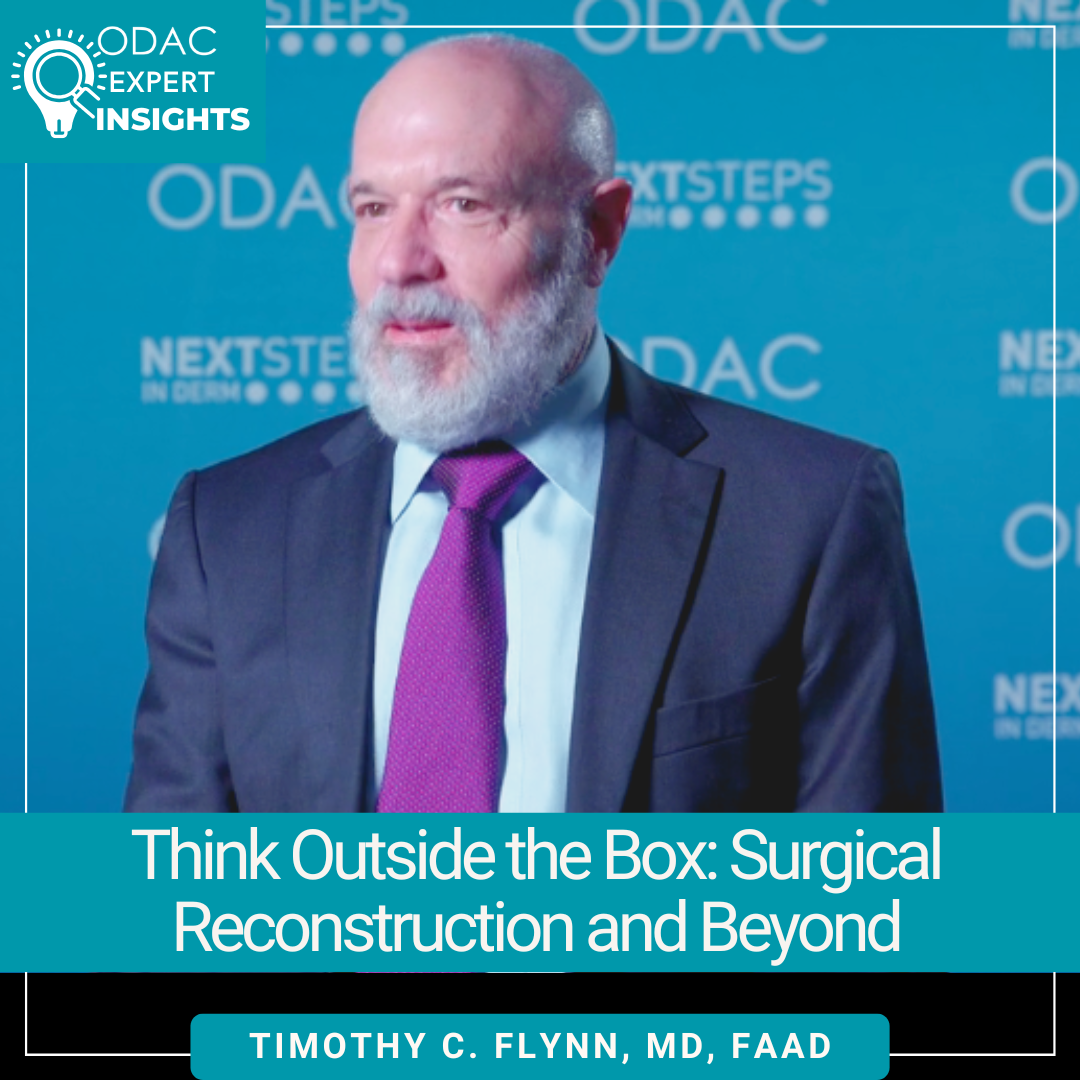When conducting surgical reconstruction, it’s important to think outside the box. That’s according to consulting dermatologist Dr. Timothy C. Flynn. Next Steps in Derm, in partnership with the ODAC Dermatology Conference interviewed Dr. Flynn, who shared questions dermatologists should ask when addressing a wound. Find out why considering shadows and highlights is important for positive outcomes. Learn which aspects of beauty Dr. Flynn thinks dermatologists should consider when conducting surgical reconstruction. Want happy, satisfied patients post-surgery? Watch as Dr. Flynn shares how scars impact a patient’s understanding of your expertise.
Further Reading
If you want to read more about surgical reconstruction, check out the following articles published in the Journal of Drugs in Dermatology:
Healing of Mohs Surgery Wounds on the Vermilion and Cutaneous Lip With Bovine Collagen Dressings
ABSTRACT
Background: Surgical wounds confined to the vermilion lip and superficial orbicularis musculature can be allowed to heal by second intention with good aesthetic and functional results. Historically, defects extending onto the cutaneous lip or into the deeper orbicularis musculature have generally required more extensive repairs with local flaps to avoid cosmetic distortion or functional issues. We aim to demonstrate the utility of bovine collagen xenografts to augment second intention healing of surgical defects on the lip, including those defects extending into the cutaneous lip and musculature.
Type of Study: Retrospective observational study with historical control.
Results: Twenty-nine patients with 31 tumors underwent Mohs surgery on the lip, with most wounds extending into the orbicularis oris musculature (65%) and onto the cutaneous lip (65%). The average defect size was 2.8 cm2 (range, 0.7-6.3 cm2). The average time to re-epithelialization was 29.7 days, with a rate of 10.2 days per cm2 of defect size, which was faster than historical controls of second-intention healing. Cosmetic outcomes were rated as acceptable to outstanding in 92% of cases.
Conclusion: For wounds on the vermilion lip, including those extending onto the cutaneous lip and into the orbicularis musculature, bovine collagen xenografts are an effective adjunct to second-intention healing with good cosmetic and functional outcomes.
ABSTRACT
Background: Full thickness defects of the ala, soft triangle, and nasal tip involving the nasal lining have traditionally been repaired with the three-stage folded paramedian forehead flap (FPFF), with a cartilage graft for support. For similar defects, the authors utilize the two-stage FPFF without cartilaginous support which provides reproducible functional and aesthetic results.
Objective: To describe the authors’ experience with the two-stage FPFF, including outcomes, complications, and design modifications to enhance functional and aesthetic success.
Methods: An IRB-approved retrospective database review of FPFF was performed at two sites. Using postoperative photographs, outcomes were assessed by blinded non-investigator dermatologist raters using a modified observer scar assessment scale.
Results: Thirty-five patients were reconstructed using the two-stage FPFF without cartilage grafts. Subjective assessment of scar vascularity, pigment, relief, and thickness by 3 independent reviewers yielded an overall cosmesis score of 8.4 +/- 1.9 (out of 40).
Conclusion: The two-stage FPFF without cartilage grafts is a reliable, cosmetically elegant repair that can provide optimal functional and aesthetic results for complex unilateral distal nose defects.
Did you enjoy this video interview? Find more here.

